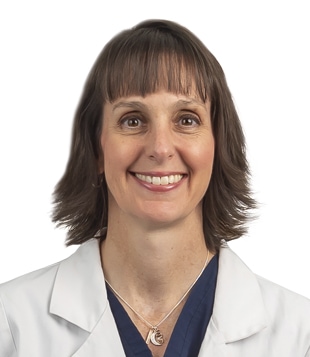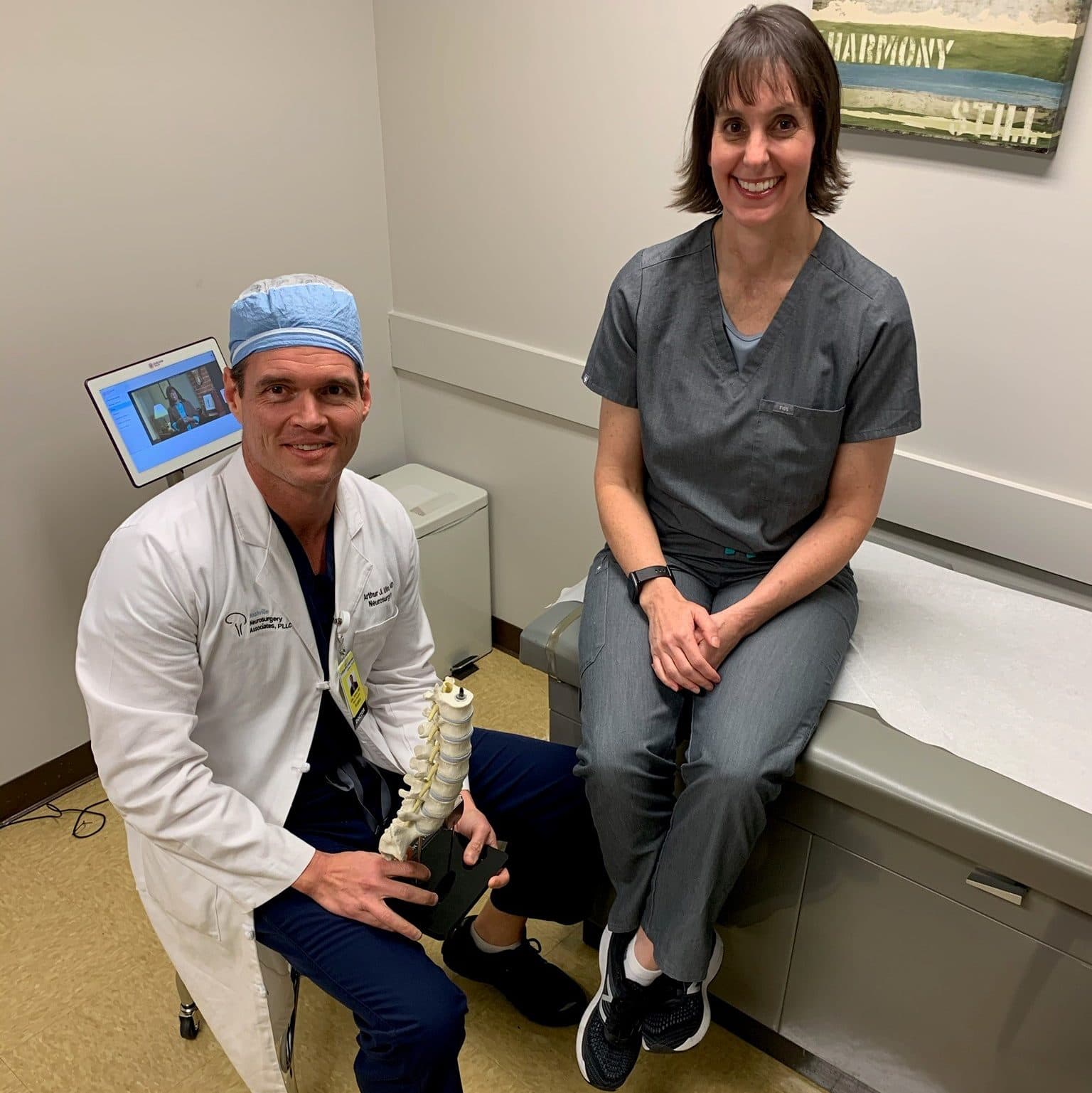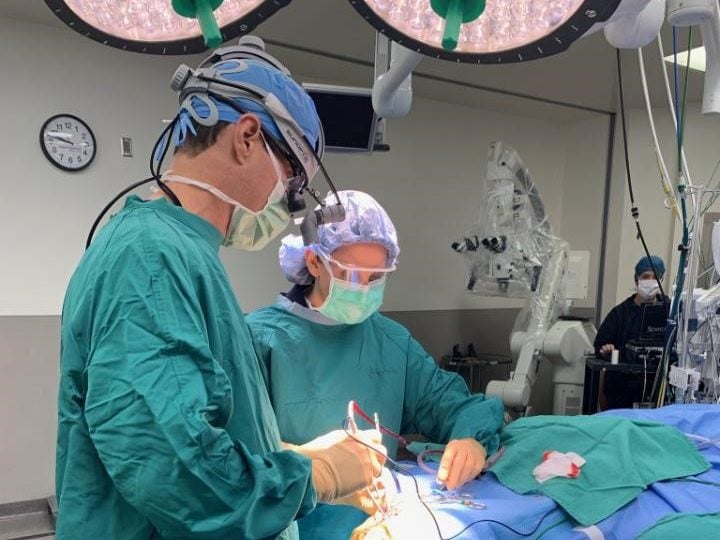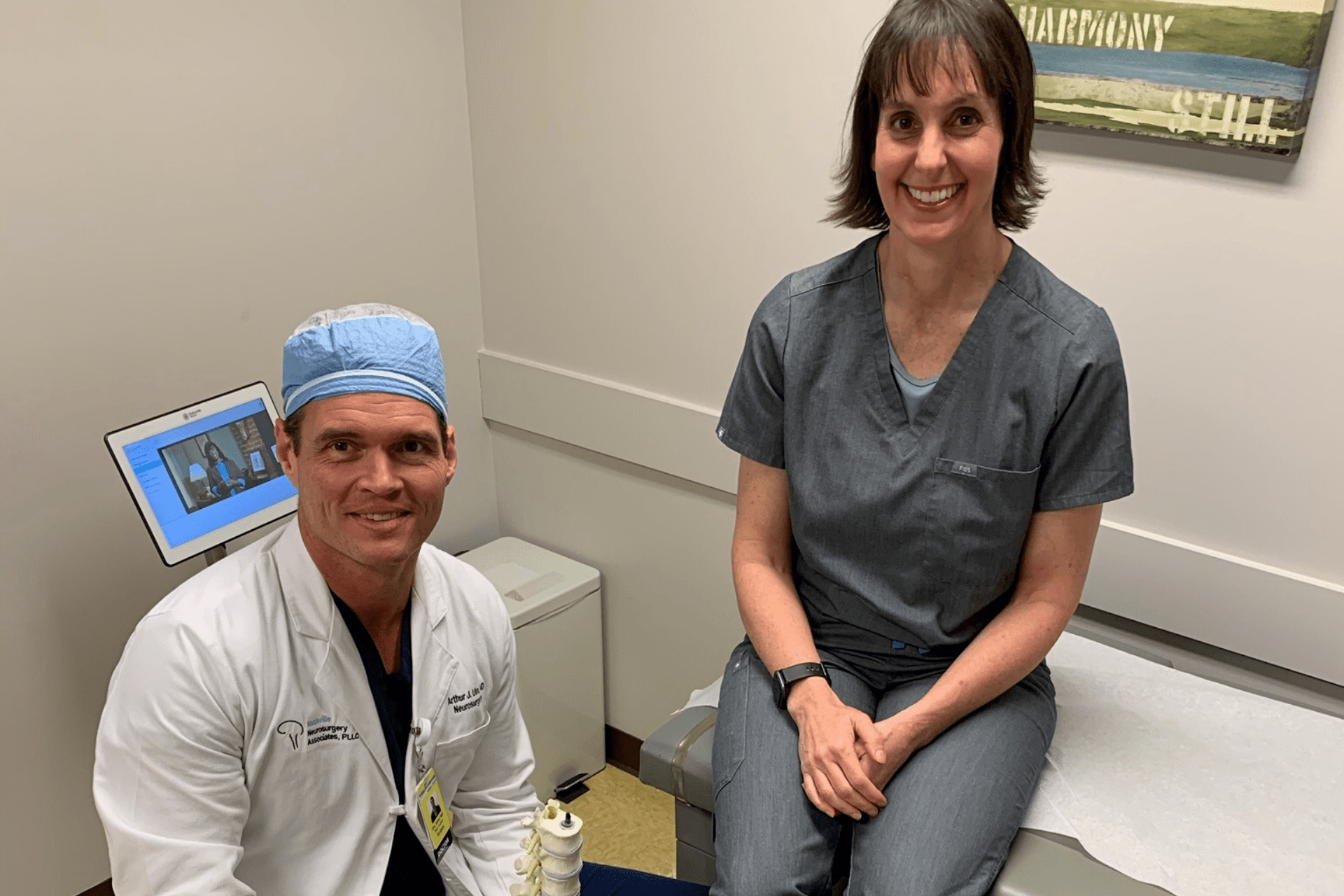Last year, data shows that surgeons performed more than 1.5 million instrumented spinal surgeries, using instruments to repair spinal damage. This number continues to increase as the overall population ages and technological advancements make minimally invasive surgical options more readily available.
But what is spine surgery like? To help answer some of your questions, we spoke to Darice Spackman, PA-C, one of our physician assistants who had life-changing spinal surgery this year to help you understand spinal surgery from a patient and provider’s perspective.
Darice’s Story

Prior to becoming a physician assistant, I was an athletic trainer. I spent two years working in a physical therapy clinic where we specialized in treating spinal injuries and disorders. When I started having neck pain, I was able to put my experience to good use. I did stretches, exercises, traction (decompression therapy) and used a TENS unit (a neuromuscular stimulator). I tried to avoid activities that I knew would cause pain.
Over the course of 7 years, between this program and several rounds of epidural steroid injections, I was able to keep my pain controlled. Unfortunately, my symptoms progressed and eventually, those home exercises started causing pain rather than alleviating it. The traction and TENS Unit no longer helped. My last round of injections only lasted a few days.
“I found myself being cranky with my loved ones because the pain was so persistent.”
Many of you may relate to my story and my symptoms. Neck pain, migraine headaches, stiffness, muscle spasms, sharp shooting pains and numbness in my fingers. My symptoms would come and go, of course, but over time they became more persistent and invasive. My pain would flare during everyday activities and duties, from lifting patients at work to playing with my children at home. I found myself being cranky with my loved ones because the pain was so persistent.
Darice’s Symptoms:
- Neck pain
- Migraine headaches
- Stiffness
- Muscle spasms
- Sharp shooting pains
- Numbness in fingers
Road to surgery

After several years of conservative treatment, I knew it was time to have surgery. As his physician assistant, I had worked with Dr. Ulm for over 8 years when it came time for my surgery. I have been a physician assistant for 19 years and am familiar with different surgeons and their techniques. Having seen how well our patients did, I had no doubt I wanted him to perform my surgery. I knew that he would care for me as if I were his own family. We had discussed surgery options a couple of times over the years, so he was not surprised when I told him I was ready.
On the day of surgery, I was well cared for by all the hospital staff. Everyone was pleasant and professional. During my surgery, a nurse called my husband to let him know how things were going. After surgery, Dr. Ulm spoke with him to let him know it was all over. My nurse in the recovery room and the nurses up on the floor were fantastic and patient.
A Life Changed
“After a few short weeks, I felt better than I had in 7 years.”
After my surgery, it did not take long to know I had made the right choice. While I had some mild surgical pain, my headaches and arm pain were gone immediately. I had some muscle spasms that responded well to muscle relaxers. I also began a mild home exercise program of stretching and very gentle strengthening. These same activities would have increased my pain before surgery but were now helping with my stiffness and muscle spasms.
After a few short weeks, I felt better than I had in 7 years. I am now able to exercise, play with my children and do daily activities without neck pain and headaches.
Changing Lives

I think going through this experience helps me relate to patients. I understand what it is like to have chronic pain and how frustrating it can be when treatments do not work. From a personal standpoint, I also understand surgery and recovery and can help patients navigate the entire process. It helps to be able to talk with someone who knows what you are feeling, and I’m glad I can be that person for our patients.
In 2011, I joined Nashville Neurosurgery as part of Dr. Ulm’s team. Then, I chose him for my spine surgery after working with him closely for many years. My patients know how much I trust him, and it helps them know they can trust him, as well.
“It helps to be able to talk with someone who knows what you are feeling, and I’m glad I can be that person for our patients.”
With every patient we see, no matter their social status, race or background, we make decisions based on how we would treat our own family. My goal is to always ensure people feel that level of trust and comfort with us because they are a part of the Nashville Neurosurgery Associates family.
At Nashville Neurosurgery Associates, our team of expert neurosurgeons treat a full range of neurosurgical conditions. We are one of the region’s leading centers for neurosurgical care and treatment, with 14 convenient locations across Middle Tennessee. For more information, please visit nashvilleneurosurgery.com.


